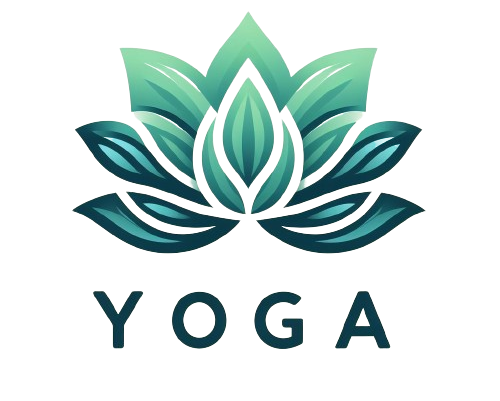Chronic pain is a pervasive issue that affects millions of people worldwide. Unlike acute pain, which serves as a normal response to injury and heals over time, chronic pain persists long past the usual recovery period and can last for months or even years. This type of pain affects one’s physical health and impacts emotional and psychological well-being. Consequently, those dealing with chronic pain often seek alternative forms of relief and management strategies. One such holistic approach that has gained attention is yoga, an ancient practice with roots stretching back over 5,000 years in India. Yoga combines physical postures, breathing exercises, and meditation practices to foster harmony between the body and mind.
The Science Behind Yoga and Pain Management
The benefits of yoga for managing chronic pain have been supported by various scientific studies. Yoga helps by addressing pain through multiple dimensions:
- Physical: yoga improves flexibility, strength, and body alignment, which can help alleviate the physical sources of chronic pain like muscle tension and joint compression.
- Neurological: regular practice of yoga can lead to changes in the way the brain processes pain, as shown by research using functional MRI scans. Yoga can decrease the brain’s sensitivity to pain by altering neurological pathways.
- Psychological: yoga encourages relaxation and stress reduction. As chronic pain can be exacerbated by stress, practices like pranayama (breath control) and meditation can significantly reduce stress and modify the perception of pain.
- Emotional: chronic pain often comes with emotional burdens such as depression or anxiety. The meditative aspect of yoga promotes better mood and mindfulness, helping patients cope with emotional distress connected to long-term pain.
Implementing Yoga into Chronic Pain Management

When choosing a yoga style for managing chronic pain, it’s vital to select a method that aligns with your physical capabilities and specific pain concerns. Gentle and restorative yoga styles are particularly beneficial due to their slow and controlled approach, which ensures safety and minimizes the risk of injury. For instance, Hatha Yoga offers a slow-paced practice that focuses on basic poses and controlled breathing, making it an excellent choice for beginners or those with chronic pain concerns. Similarly, Iyengar Yoga, known for its emphasis on precision and alignment, frequently incorporates the use of props such as blocks and straps, which can aid individuals with limited mobility by providing support and ensuring proper alignment.
Restorative Yoga is another suitable option where the use of various props allows participants to hold poses for longer durations without physical strain, promoting deep relaxation and stress relief. This type of yoga emphasizes healing and recuperation, making it ideal for those suffering from chronic pain. Alternatively, Yin Yoga targets deep connective tissues and encourages better circulation and flexibility through poses that are held for several minutes at a time. This style allows for a gradual release of tension and an increase in joint mobility, which can be particularly therapeutic for those suffering from chronic stiffness and pain.
Each of these yoga styles offers unique benefits and can be adjusted to accommodate the individual’s needs, encouraging a healthier, more comfortable range of movement and an improved sense of well-being. It is important, however, to approach these practices with patience and to be mindful of the body’s responses, gradually adapting the intensity and duration of the poses to suit personal comfort levels and health objectives.
Work With a Qualified Instructor
Working alongside a qualified yoga instructor is crucial when navigating the incorporation of yoga into a chronic pain management strategy. Chronic pain can be complex, and individual needs vary significantly, requiring personalized guidance to ensure that the practices adopted are safe and effective. A knowledgeable instructor, ideally with experience in therapeutic yoga or a strong background in anatomy and physiology, can offer significant advantages. They have the insight necessary to adjust poses and sequences to accommodate your unique limitations, pain levels, and physical conditions. By doing so, they help prevent the exacerbation of existing pain issues and the potential occurrence of new injuries. Moreover, a skilled instructor can provide modifications and use of appropriate props to support and ease your movements, ensuring that each yoga session contributes positively to your healing process. Their guidance in adopting the correct posture and technique is invaluable in maximizing the benefits of yoga, such as increased flexibility, strength, and stress relief, all of which are essential components in managing chronic pain effectively.
Start Slowly
For individuals grappling with chronic pain, embarking on any new physical activity, including yoga, necessitates a gradual approach to avoid overwhelming the body and exacerbating pain. Starting slowly is key—beginning with simple, minimally demanding postures can help the body adjust without undue stress. Initial sessions might focus on passive poses that do not require extensive movement or strength, such as seated or reclining positions. These gentle starts help to increase blood flow, gently stretch and strengthen muscles, and ease joints into movement, setting a solid foundation for more active practices in the future. As the body becomes more accustomed to these basic poses, it can gradually accommodate slight increases in activity. Scaling up too quickly can lead to setbacks, so increasing the intensity and duration of sessions should be done thoughtfully and attentively, always aligning with what feels right for the body at any given moment. This attentive progression helps in managing pain effectively and builds confidence and establishes a sustainable practice, encouraging long-term adherence to yoga as a therapeutic tool for chronic pain management.
Listen to Your Body
Incorporating mindfulness into your yoga practice is essential, especially when managing chronic pain. Being acutely aware of how your body responds during and after yoga sessions is crucial in identifying what works best for your specific needs. This means not just passively moving through poses but actively feeling and acknowledging every sensation and response. If a particular movement or pose leads to discomfort or exacerbates pain, it’s vital to recognize this as a signal from your body to pause and reassess. Continuing with a posture that causes pain can lead to injury or increased pain, counteracting the benefits of the practice. Instead, such signals should prompt a conversation with your instructor about possible modifications that provide similar benefits without discomfort. Adjustments might include using props to support the body better, changing to a different pose that targets the same area with less strain, or simply reducing the intensity or duration of the pose. By listening to your body and making adjustments based on its feedback, you ensure that your yoga practice promotes healing and wellness, aligning with your body’s needs and limits. This attentive approach helps in preventing injuries and enhances the therapeutic effects of yoga, making it a more effective tool in managing chronic pain.
Regularity and Routine
Maintaining a regular and consistent yoga practice is fundamental for those using yoga as a method of managing chronic pain. Consistency in practice helps to cultivate discipline, which is essential for long-term pain management and overall well-being. Establishing a routine can greatly enhance the efficacy of yoga as it allows the body and mind to gradually adapt and learn from each session. When yoga is practiced sporadically, the body may not retain the flexibility or strength gains, and the mental benefits, such as stress reduction and mindfulness, may not fully develop. On the other hand, a short daily practice ensures that the body remains in the habit of movement, reducing stiffness and enhancing circulation, while the mind continues to benefit from regular periods of relaxation and mindfulness. This helps in managing the physical aspect of chronic pain and addresses the psychological and emotional challenges associated with it. Over time, this routine becomes a part of the individual’s lifestyle and contributes to greater health improvements and a better quality of life. Establishing fixed times for practice, possibly incorporating sessions into morning or evening routines, can help make yoga an integral and non-negotiable part of daily life.
Yoga offers a promising way to help manage chronic pain, improving quality of life through a low-impact, holistic approach. It addresses the physical aspects of pain and the psychological and emotional challenges that accompany it. However, it’s crucial to approach yoga with caution, particularly for those who are new to this practice or have extensive pain issues. Always consult healthcare providers before starting any new treatment for chronic pain, and consider blending yoga with other management techniques to achieve the best results. With the right approach, yoga can be a valuable part of a multi-dimensional strategy for living better despite chronic pain.
